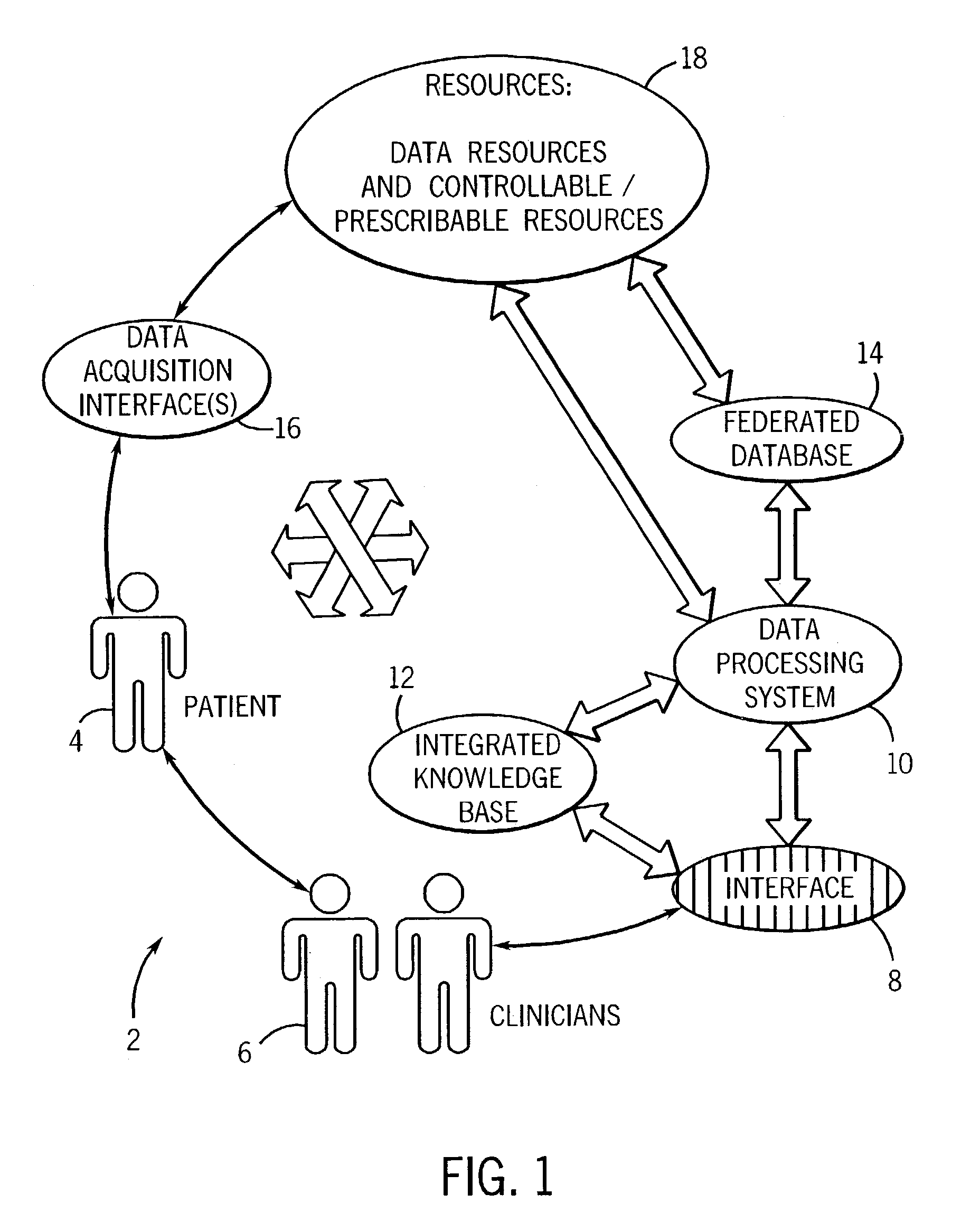Computer-assisted data processing system and method incorporating automated learning
a data processing system and computer assisted technology, applied in the field of medical data processing, acquisition and analysis, can solve the problems of limited integration of such programs, little or no activity focusing on enhancing the performance of such algorithms, and the attempt has not even approached the level of integration and correlation, etc., to achieve rapid and informed identification, rapid, informed, targeted and efficient data acquisition, and improve patient care
- Summary
- Abstract
- Description
- Claims
- Application Information
AI Technical Summary
Benefits of technology
Problems solved by technology
Method used
Image
Examples
Embodiment Construction
[0047]Turning now to the drawings, and referring first to FIG. 1, an overview of a computer aided medical data exchange system 2 is illustrated. The system 2 is designed to provide high-quality medical care to a patient 4 by facilitating the management of data available to care providers, as indicated at reference numeral 6 in FIG. 1. The care providers will typically include attending physicians, radiologist, surgeons, nurses, clinicians, various specialists, and so forth. It should be noted, however, that while general reference is made to a clinician in the present context, the care providers may also include clerical staff, insurance companies, teachers and students, and so forth.
[0048]The system illustrated in FIG. 1 provides an interface 8 which allows the clinicians to exchange data with a data processing system 10. More will be said regarding the types of information which can be exchanged between the system and the clinicians, as well as about the interfaces and data proces...
PUM
 Login to View More
Login to View More Abstract
Description
Claims
Application Information
 Login to View More
Login to View More - R&D
- Intellectual Property
- Life Sciences
- Materials
- Tech Scout
- Unparalleled Data Quality
- Higher Quality Content
- 60% Fewer Hallucinations
Browse by: Latest US Patents, China's latest patents, Technical Efficacy Thesaurus, Application Domain, Technology Topic, Popular Technical Reports.
© 2025 PatSnap. All rights reserved.Legal|Privacy policy|Modern Slavery Act Transparency Statement|Sitemap|About US| Contact US: help@patsnap.com



